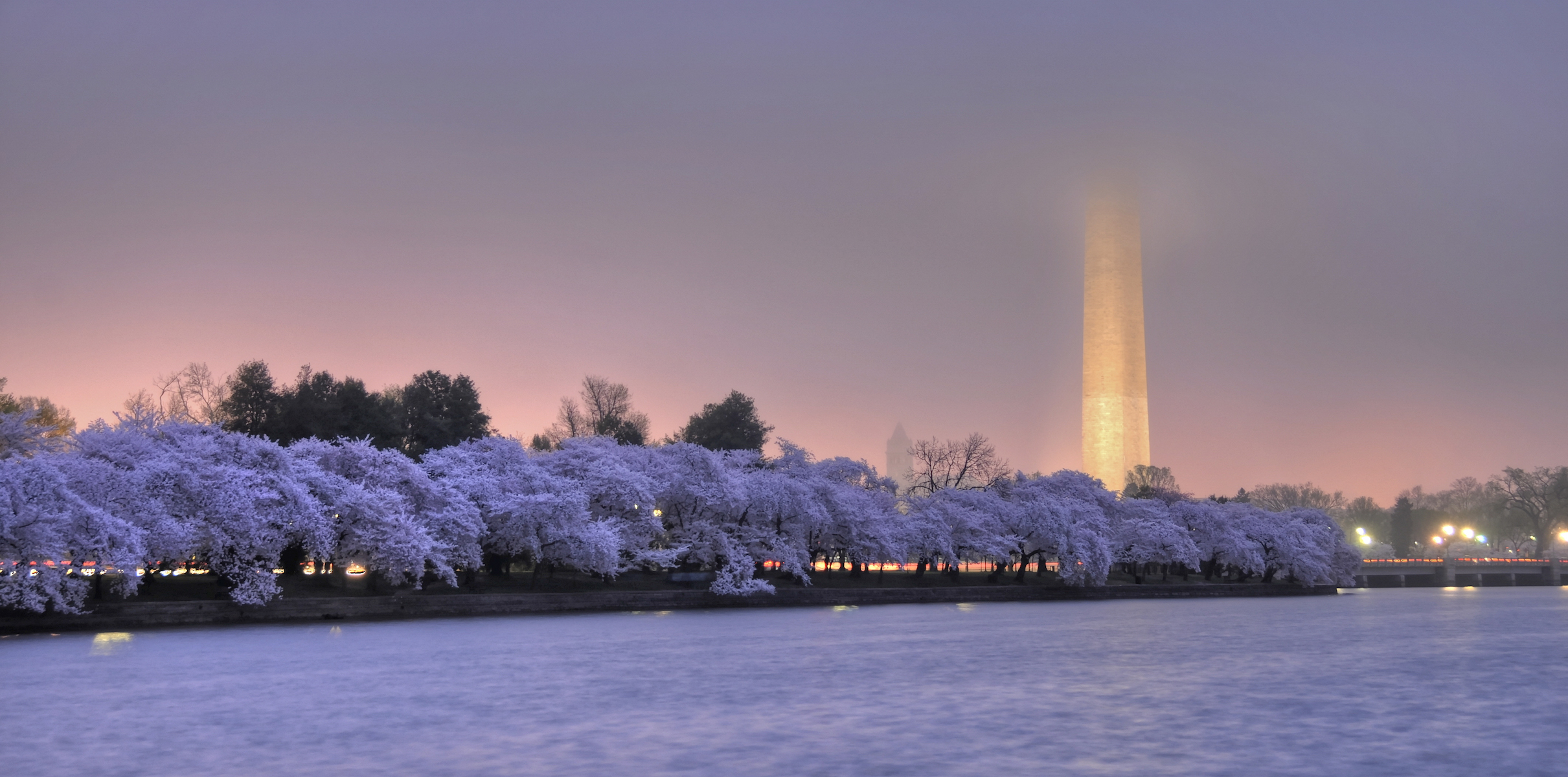
Nothing brings crowds to Washington, DC like the Cherry Blossom Festival. More than a million visitors come into the city over the two-week window in which the roughly 3,800 cherry trees around the city sprout their white and pink flowers. As an area resident, I find it great to be so close to an area so many people want to go. It’s also rough having to share the beautiful scenes with so many people. If you’re from the area, you might feel the same way. If you’re visiting, you might start to feel claustrophobic. In this post, I’ll show you where all the action is and where you can find some trees away from all the crowds.
When to Go
You don’t get to choose your time of year. The peak bloom window is usually only a week long. There are budding and falling flowers for a week or so on either side of the peak but the perfect scenes are fleeting. The bloom period is highly dependent on the temperature and moisture in February and March. It ranges from late March through Mid-April with an average peak bloom around April 4th according to the National Park Service (NPS), which closely tracks the blooming period for the cherry trees around DC. If you have to choose a time to visit well in advance, April 4th is going to be your best bet. If your plans are more flexible, you can wait for the annual forecast.
It seems like I say this in every post I write, but the best time of day to photograph the cherry blossoms is early morning when the white flowers reflect the soft, colorful light. Perhaps more importantly, you can get photos of the trees that include the ground without crowds of people. After 10 a.m., it’ll be tough to find an angle that doesn’t include a lot of people looking upwards, strollers, and other photographers. Sunrise isn’t always easy either. Morning brings out the hardcore photographers with their tripods, long lenses, and other gear (see the photo below for an example). Midday photos are tough unless there are clouds to diffuse the light. The combination of bright light and white flowers can lead to blown out areas in your photos. Sunsets provide another chance for great light but the crowds will be very heavy. In some areas you may even have trouble setting up your tripod.
Photographic Possibilities
With that said, there are plenty of places to go so you won’t be constantly competing with others for the right angles and the best photos. The map below shows several of my favorite locations. You can click on the pins to see photos from each location. There are written descriptions of each location below the map.
[googlemaps http://maps.google.com/maps/ms?msa=0&msid=215447723233123953430.000494f2d93b9c99a671d&ie=UTF8&t=h&ll=38.876468,-77.041626&spn=0.053455,0.102825&z=13&output=embed&w=800&h=500]
-The Tidal Basin-
The Tidal Basin is ground zero for the cherry blossoms. There are 1,678 trees along the 1.8 miles of pathways surrounding the Basin and the views across the water provide great foreground and background elements. So it’s no surprise that this is where you’ll find the most people. One of the best spots around the Tidal Basin is near the FDR Memorial where you’ll find a Japanese Lantern Sculpture and clean views of the Jefferson Memorial and the Washington Monument. Just south of the FDR Memorial is a spot where you can get a beautiful profile photo of the Jefferson backlit by the sun at sunrise. From the steps of the Jefferson Memorial itself you get a beautiful 180-degree view of the tree lined tidal basin. Following the pathway around to the Tidal Basin parking lot you’ll find more beautiful trees and a straight-on view of the Jefferson. Finally, one place that is sure to attract thousands of visitors this year is the Martin Luther King Jr. Memorial. This will be the first chance to see the several hundred new trees bloom around Washington’s newest Memorial.
-Haynes Point/East Potomac Park-
The nearly three miles of roads around Haynes Point are mostly used as a place for people to park during the cherry blossom season but this area actually has more trees than the Tidal Basin. If you park at the Haynes Point lot, you should walk out rather than taking the complimentary bus. Haynes Point is not very picturesque. It’s usually covered with debris that washes in at high tide. But the long walks and less than ideal setting will give you a lot of trees to yourself. Here you can take portraits with your friends and family and take your time with macro photos. You probably won’t want many wide-angle photos here.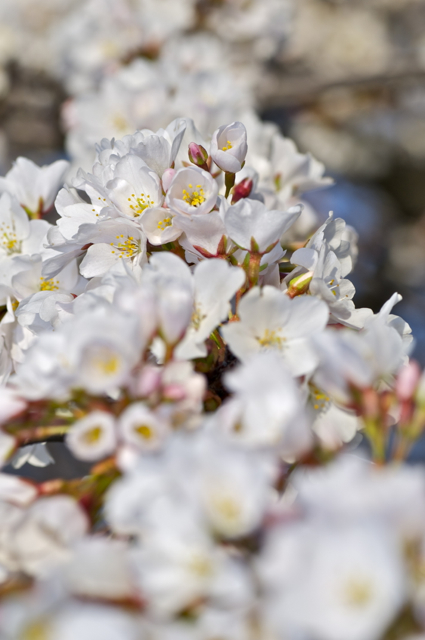
-Washington Monument-
Just to the northwest of the Washington Monument is an amazing clump of cherry trees. Across all of the Monument’s grounds there are 342 trees, but this grouping of trees, in particular, offers great photos. In addition to the flowering trees and the Washington Monument in the background there is nicely manicured grass (which you can’t always say about the Tidal Basin and Haynes Point). These trees are in a high traffic area between the White House and the Tidal Basin but don’t get as much attention as the other areas.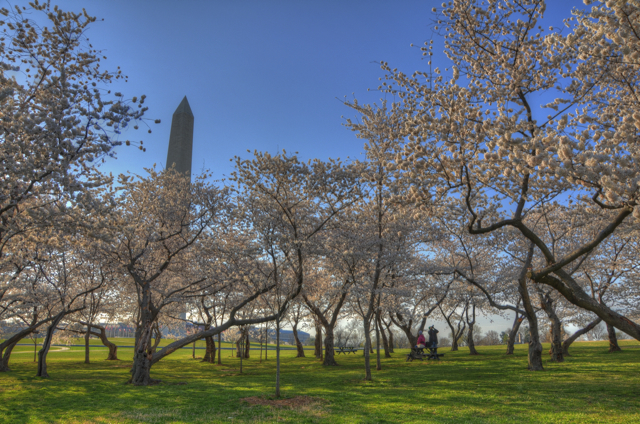
-Around the U.S. Capitol-
The Capitol Building is on the opposite end of the National Mall from the Tidal Basin. While a popular tourist attraction in it’s own right, the Capitol doesn’t get the same density of crowds that you see on the West end of the Mall at this time. And there are great trees here as well. There is a beautiful set of trees just to the South of the Capitol steps on the West side of the Capitol.
-Lower Senate Park-
Just to the North of the Capitol there is a park with fountains, benches, and a few dozen cherry trees. This area gets passersby that are heading from Union Station to the Capitol (or vice versa) but otherwise people don’t seek these trees out. This provides a great opportunity for pictures without all the crowds.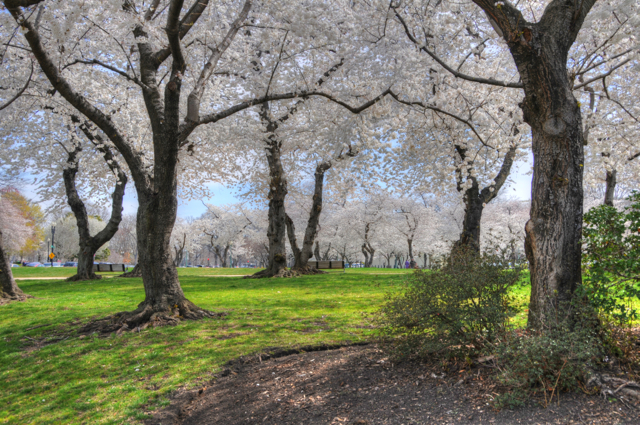
-Japanese American Memorial to Heroism During WWII-
This Memorial is a great hidden gem in DC. It has really nice curving lines and as an homage to it’s Japanese-American namesake is surrounded by cherry trees.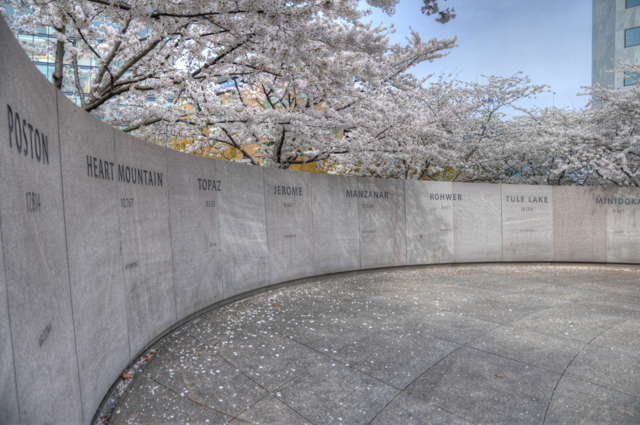
-Arlington Cemetery-
Arlington National Cemetery is one of the best places to go in the Spring and the Fall for great tree pictures. There is a variety of trees and the graves offer a solemn setting. The trees are not located in any one place in the cemetery so you’ll have to keep an eye out. I know there are some near the Arlington House. I walked through Arlington recently and the trees are easy to spot. Just walk around and you’ll see them.
What to Bring
Lens: In my opinion, there are two schools of thought regarding photos of the cherry blossoms. You can opt for photos of the cherry blossoms that include their surroundings (e.g., the Jefferson Memorial). For these photos, I recommend a standard zoom lens with focal lengths 18-135mm for DX cameras (27-200 for FX). Wider angles are necessary, because the further you step back the more likely it is someone will step in between you and your subject. Or you can take tight, detailed, macro photos of the flowers. For this you can use the zoom lens and a large aperture or you can bring a specialty macro lens. At this time of year there is no shortage of tulips, daffodils, and other flowers to make bringing the macro lens worth the extra weight.
Tripod: A tripod will definitely be necessary for sunrise photos otherwise it’s just a lot to lug around. Around midday you may block people’s way by setting it up around the Tidal Basin. Be cognizant of your surroundings. You won’t be able to set it up at the Capitol or inside the Jefferson Memorial, and technically you’re not supposed to in Lower Senate Park but it’s unlikely anyone will stop you. At Haynes Point you’ll have all the room you need to set up your tripod and any other gear. You shouldn’t need a tripod at Arlington Cemetery since it’s only open during daylight hours anyway, plus I don’t like setting one up there out of respect.
Flash: A hot-shoe flash can be helpful for fill lighting during the day. When taking close up photos it’s best to have a hot-shoe or separate lighting source so the barrel of your lens doesn’t cast shadows when you’re getting up close.
Filter: A circular polarizer can be used to clear haze, darken sky, and saturate the grass.
Additional Resources
NPS Cherry Blossom Site – The National Park Service’s official cherry blossom site. The best source of information on the blooming state of the trees and the latest predictions about blooming periods. For the scientifically minded, there’s also descriptions of what types of cherry trees can be found at each location.
Cherry Blossom Festival – 2012 is the 100th anniversary of the cherry blossoms and there are tons of events happening, not all of which are particularly photogenic but are interesting nonetheless. This site is the best source of information on what’s going on during the month-long festival.
Monumental Thoughts – A local tour guide and longtime Washingtonian gives his advice about where to go to find cherry blossoms.
Summary
What: Cherry Blossoms
Where: Tidal Basin, Capitol, Japanese-American WWII Memorial, & Arlington Cemetery
When: TBD
____________________________
Lens: Telephoto (DX: 18-135mm; FX: 27-200mm) & Macro
Tripod: Bring It (Full)
Flash: Bring it
Filter: Circular Polarizer
Bag: Any Size


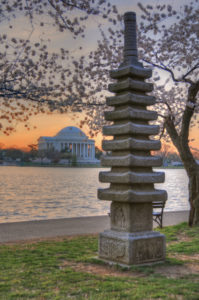
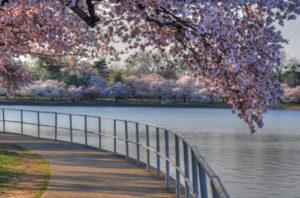

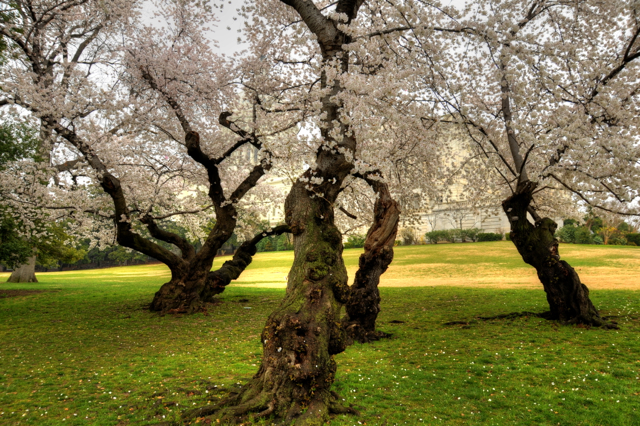
Pingback: » 100 Years of Cherry Blossoms! Take a Picture! Visions in the Capital
Pingback: How I Plan Trips and What Goes Into PhotoTourismDC « PhotoTourism DC
Pingback: Japanese Pagoda at the Cherry Blossoms, Washington DC | | Metro DC PhotographyMetro DC Photography
Pingback: Photographing Arlington National Cemetery « PhotoTourism DC
Pingback: Photographing the Washington Monument « PhotoTourism DC
Pingback: Capturing the Cherry Blossom Festival in DC – A.KEIL
Pingback: Photographing Arlington National Cemetery | brandonkopp.com
Pingback: Photographing the Washington Monument | brandonkopp.com
Pingback: Planning Photography Adventures | brandonkopp.com
Pingback: Photographing the Washington Monument | brandonkopp.com